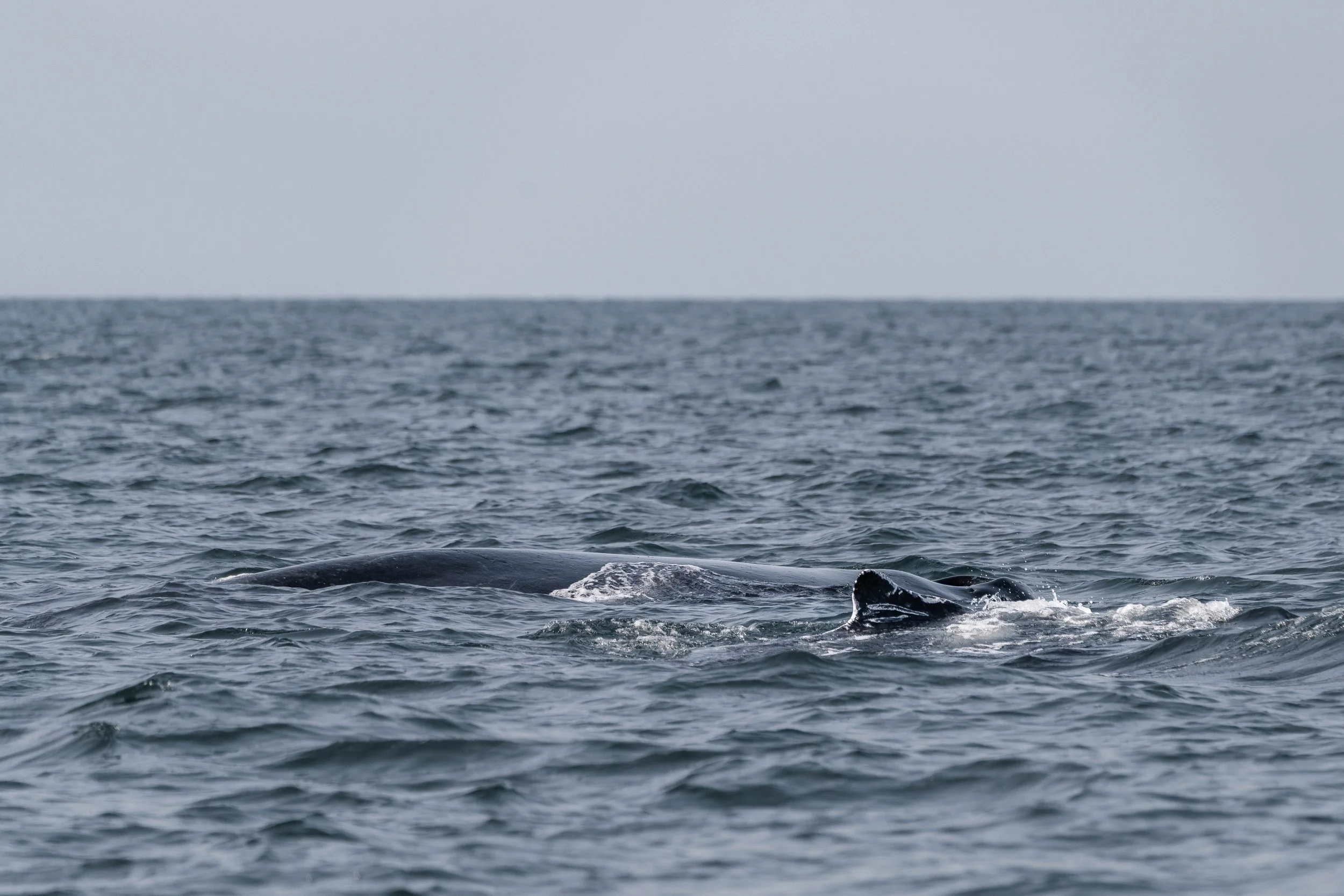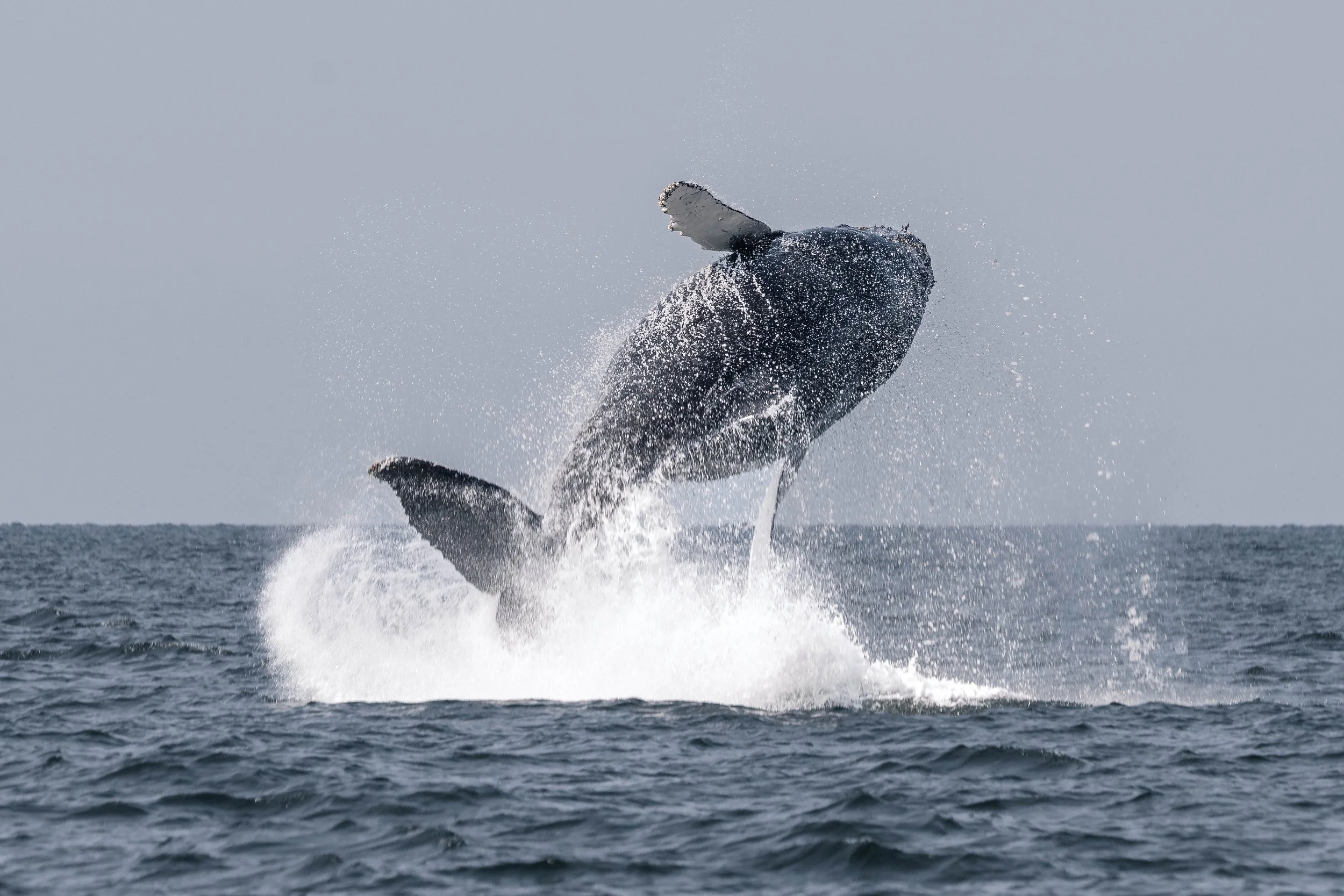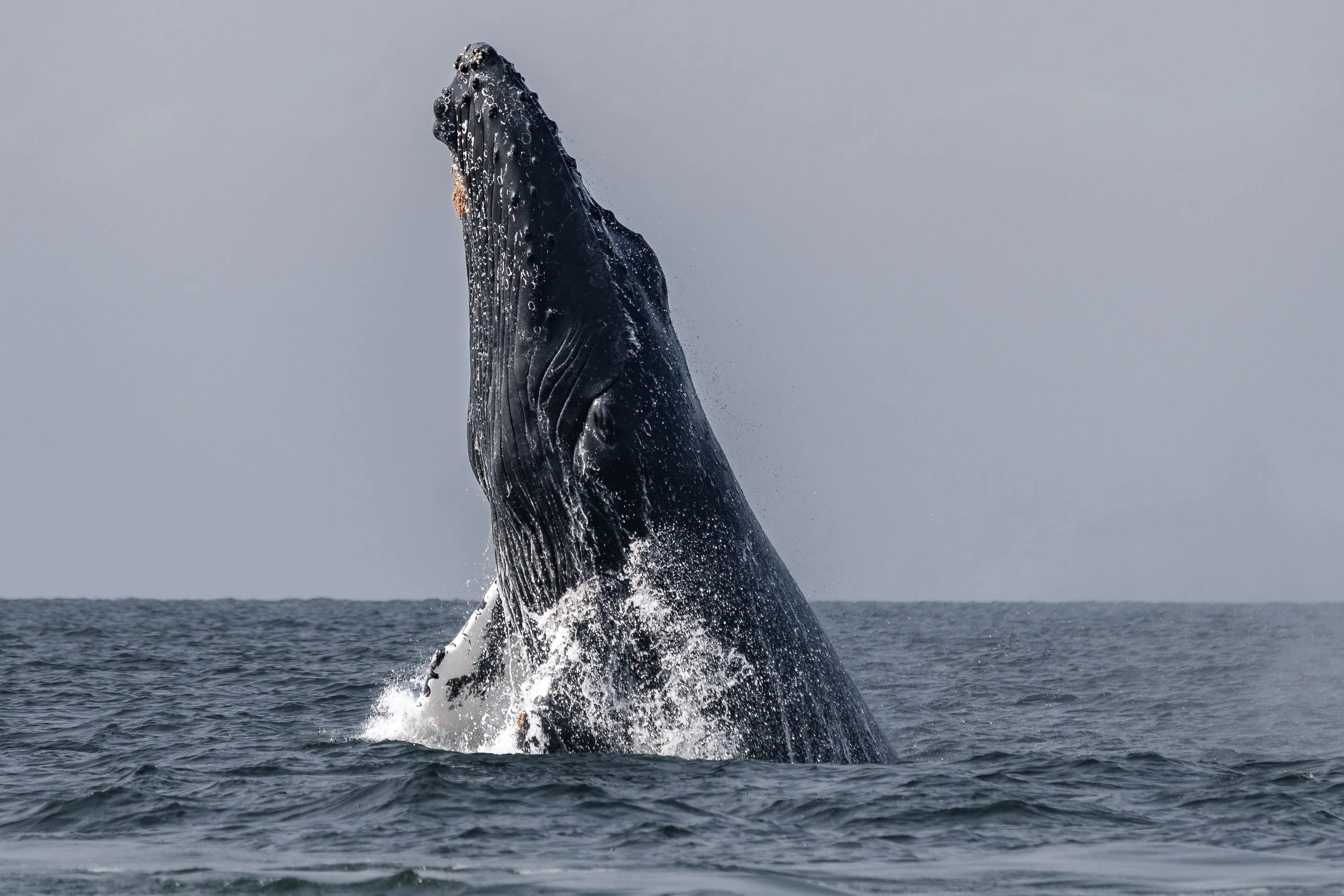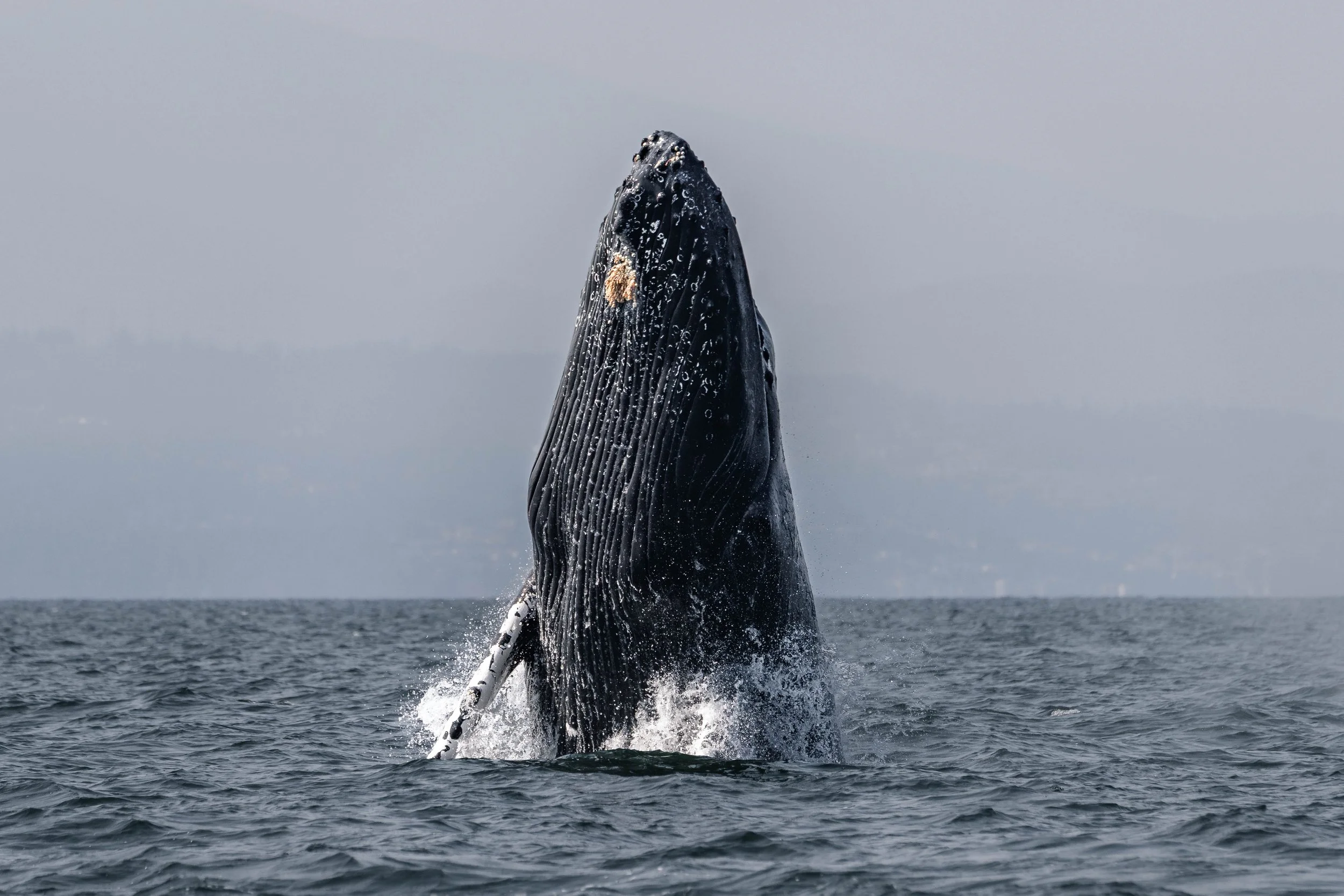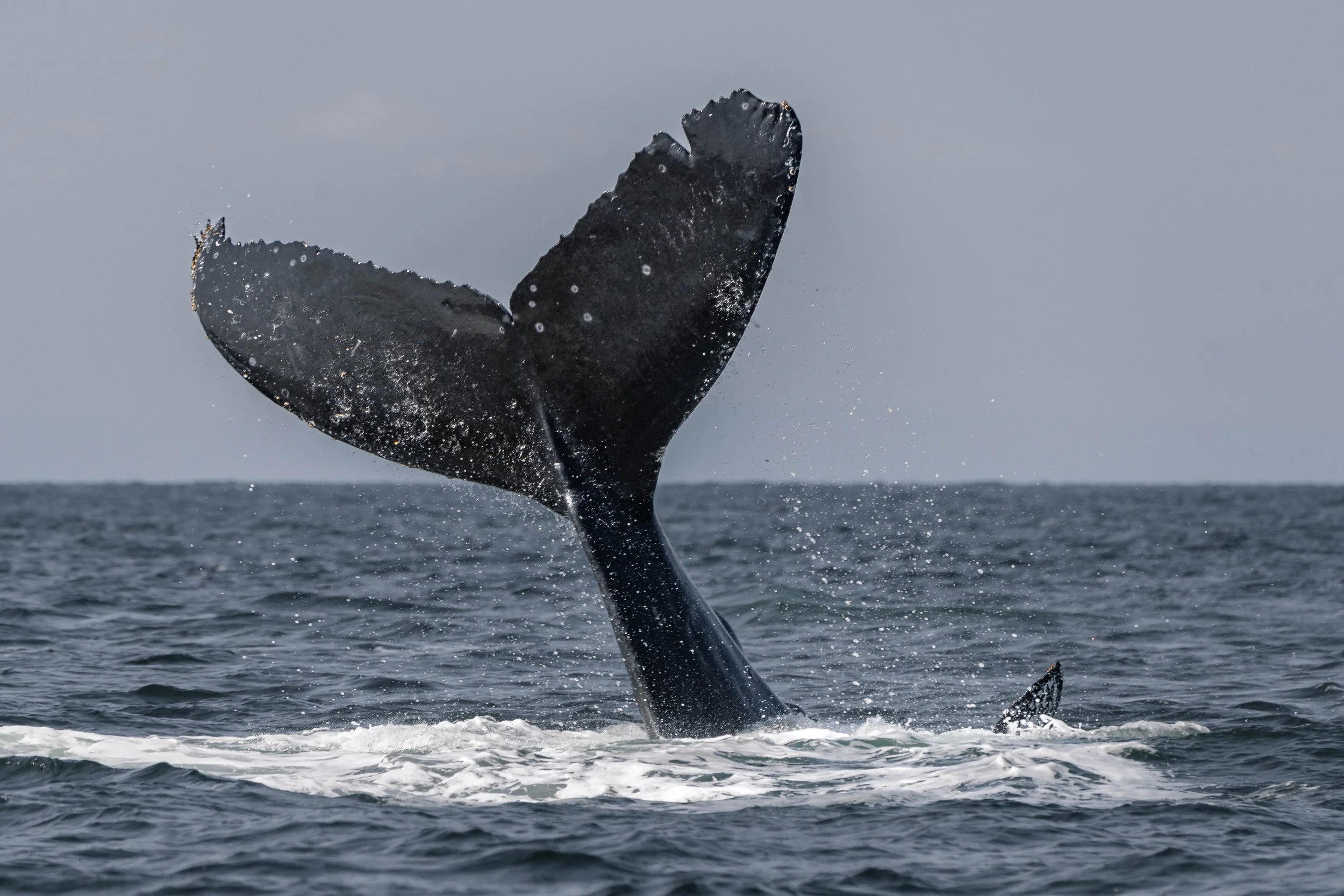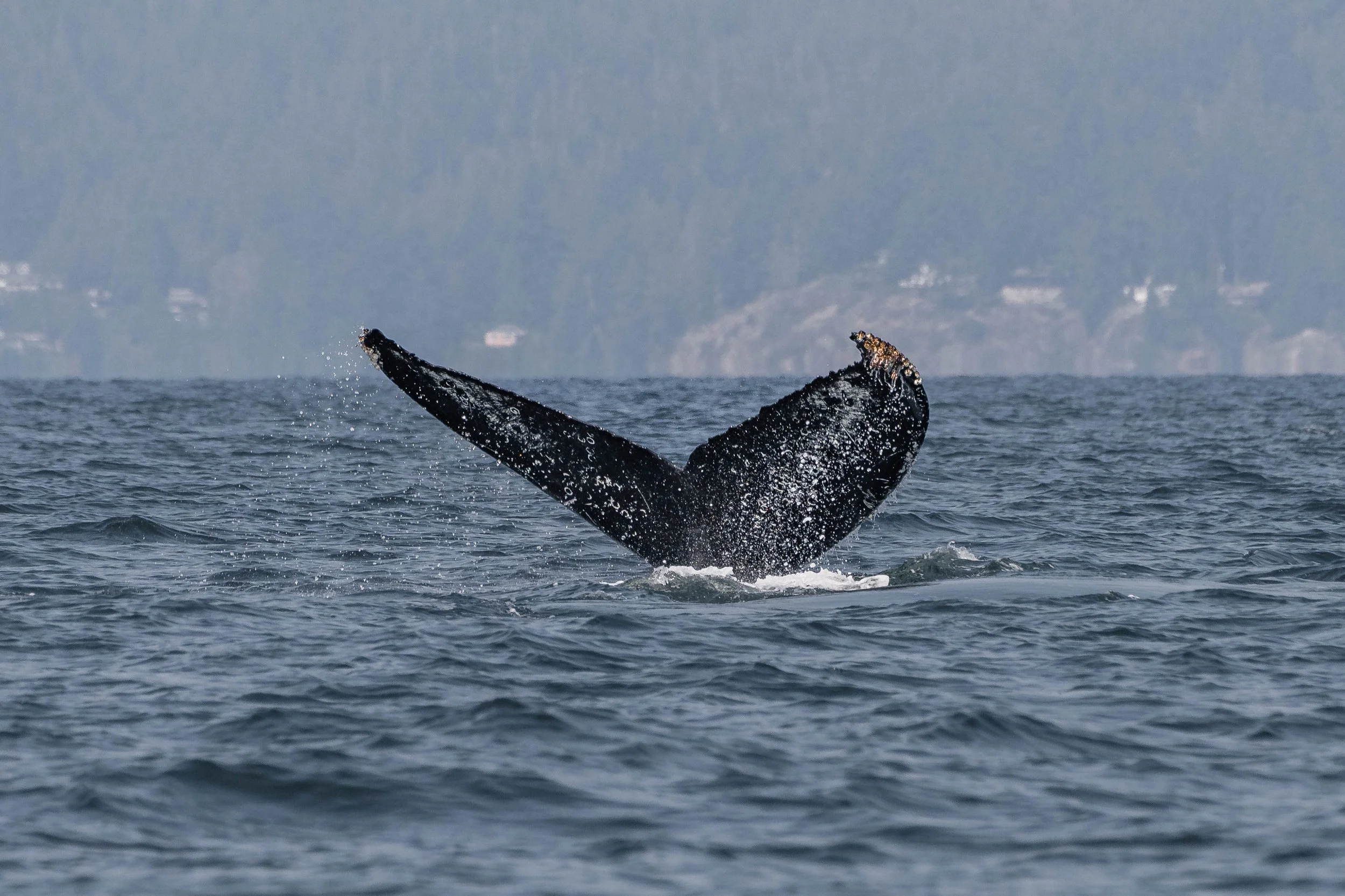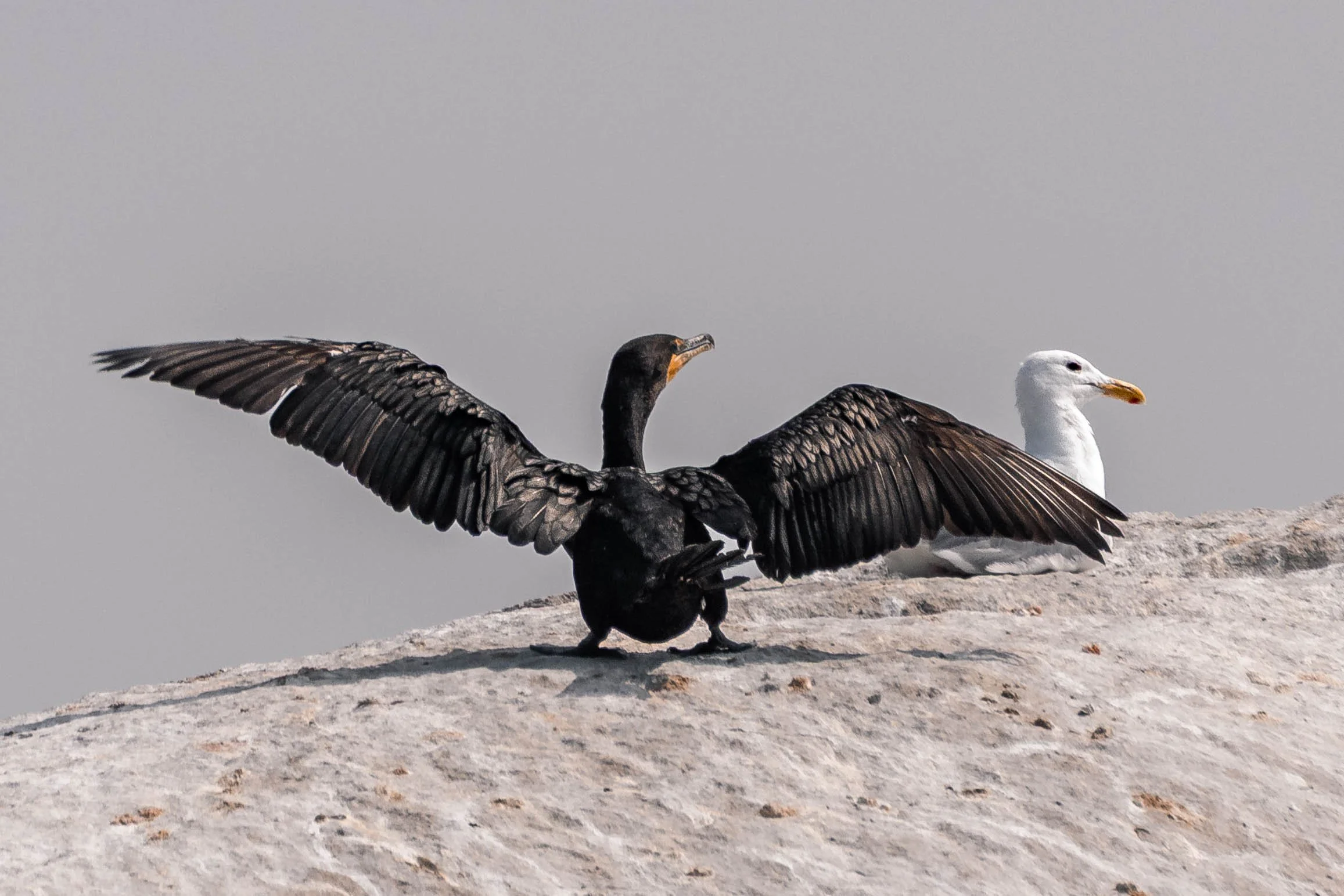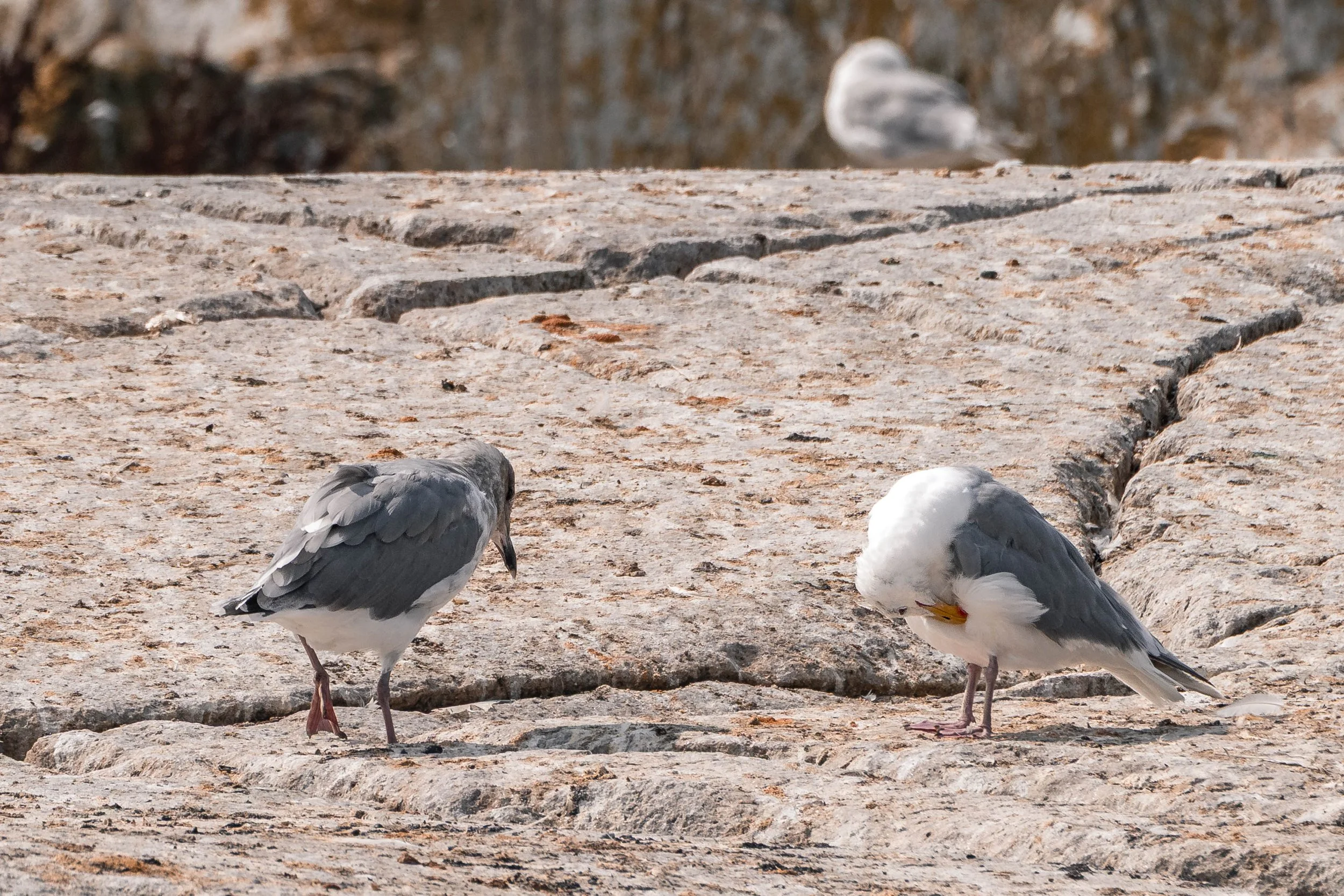September 1, 2025, 10:30 AM - Humpback Soup with a Bouncy Baby!
Some days on the water feel like a reunion, and today was one of them. Calm seas and clear skies gave us the perfect backdrop to spend time with several of our most well-known humpback whales here in the Salish Sea.
Not long after leaving the dock, we came across Checkmate (BCY1104) and Arial (BCY0767). Both are frequent visitors to these waters, travelling all the way from the breeding grounds in Hawaii to spend their summers in the Salish Sea. Humpback whales are impressive travellers, undertaking one of the longest migrations of any mammal on Earth. Each year, they journey thousands of kilometres between warm tropical breeding grounds and cold, food-rich northern feeding grounds. Along the Pacific Coast, many humpbacks migrate to the warmer waters of either Hawaii or Mexico for the winter months. In these tropical waters, calves are born, and mating takes place. When spring arrives, the whales head back north to colder regions like the Salish Sea, where abundant fish and krill fuel their massive appetites! Arial and Checkmate are excellent examples of this cycle in action. These two whales are known Hawaii–BC migrants, linking the warm waters of the islands with the cool, nutrient-rich Strait of Georgia. Each time we see them here, we’re reminded of the incredible 5,000-kilometre journey they complete year after year, a testament to both their endurance and navigational skill.
After leaving these two, the boats headed in different directions to see who else we could find. Soon, Kula found another lively group Grizzly (BCY1330), Yogi (BCY0409), Hendrix (BCY1278), and Dalmatian (BCY0994). This quartet stayed close, surfacing almost in unison as they travelled through the Strait. While humpbacks are not as rigidly social as orca, they do form fascinating temporary associations, and this group was a perfect example. Watching them move together was a reminder of how complex humpback society really is; sometimes solitary, sometimes highly social, and always keeping us guessing.
As we come to the end of humpback season here in the Salish Sea, we start to see the behaviour from the humpbacks change as they anticipate the upcoming breeding season. As the males’ hormones begin to kick into overdrive, it’s not uncommon to see the males get a head start on flirting with the females. However, this behaviour is seen much more aggressively in the warmer waters of Hawaii and Mexico. Heat runs are one of the most dramatic displays of this competition. During a heat run, several males may follow a single female in fast-paced chases, using breaching, tail-slapping, and vocalizations to show their strength and endurance. These interactions can last hours, and sometimes multiple males will join in succession. While only one male typically mates with the female, the display allows researchers to observe the social dynamics, physical fitness, and even personality traits of the competing whales. And while we don’t see mating behaviours to the same extent as the breeding grounds, it can still lead to some interesting encounters!
As one boat spent time with our quartet, the other came across another exciting pairing: Split Fluke (BCX1068) with her brand-new 2025 calf. Few sights stir more excitement than a young humpback by its mother’s side, surfacing with smaller, quicker breaths and mimicking her movements. Calves like this one are born in warm breeding grounds and make the long journey north with their mothers, learning the ropes of life in the feeding grounds. Today, Split Fluke’s calf was sticking close, while nearby, we also spotted Moresby (KEY0055) travelling in the area. It’s not unusual to see adults in proximity to mothers and calves, and these moments give us a glimpse into the shifting and temporary associations that make humpback life so fascinating.
This little baby sure was bouncy! Guests were treated to a ton of action from this sweet little calf, which can be seen in the pictures below. Surface activity, such as breaching, tail-slapping, and playful swimming, helps calves build muscle, coordination, and stamina, all critical for the long migrations ahead. In addition, these behaviours are a form of social learning, as calves watch and mimic their mothers and other nearby whales, gradually mastering the complex movements needed for feeding and survival. Playful surface behaviour may also serve to strengthen the bond with their mother, as she often responds with protective or guiding behaviours while teaching them the rhythms of life in the ocean.
Our final stop of the day was to the dazzling White Islets, a place with an incredible abundance of different species. Steller Sea Lions, Harbour Seals, Cormorants and a variety of different bird species can all be found here, making a great place to end the day after spending time with so many great whales. Each of these encounters reminded us of just how special the Salish Sea is as a feeding ground for many different species. To see familiar whales return year after year, sometimes bringing new calves, sometimes pairing up in unexpected combinations, is a gift that never loses its magic. Every sighting helps to build a clearer picture of who these whales are, where they travel, and how their relationships shape their survival.
Check out all the photos from the day below, taken by Marine Naturalists Val Watson and Vanessa Vereschahen.
Checkmate’s dorsal fin. Photo by Val Watson.
Checkmate’s dorsal fin. Photo by Val Watson.
Checkmate’s fluke. Photo by Val Watson.
Arial’s fluke. Photo by Val Watson.
Split Fluke with her calf (dorsal fin) beside her. Photo by Val Watson.
Split Fluke’s calf breaching. Photo by Val Watson.
Making a splash! Photo by Val Watson.
Photo by Val Watson.
An elegant angle of Split Fluke. Photo by Val Watson.
Split Fluke landing, with water pouring out of her mouth. Photo by Val Watson.
Split Fluke’s calf coming in for a landing. Photo by Val Watson.
Breach for the sky! Photo by Val Watson.
Photo by Val Watson.
Check out all the barnacle marks on Split Fluke. Photo by Val Watson.
Split flukes characteristic notch. Photo by Val Watson.
Moresby’s fluke. Photo by Val Watson.
Hendrix’s fluke. Photo by Val Watson.
Dalmatian’s fluke. Photo by Val Watson.
Grizzly’s fluke. Photo by Val Watson.
Yogi cartwheeling. Photo by Val Watson.
Dalmatian going down for a dive. Photo by Val Watson.
Yogi throwing his weight around. Photo by Vanessa Vereschahen.
Two Harbour Seals basking in the sun. Photo by Val Watson.
Back Rolls! Photo by Vanessa Vereschahen.
A large male Steller Sea Lion towers over the group. Photo by Val Watson.
A large, sexually mature male, characterized by his abundant neck mane. Photo by Val Watson.
Down for a dive! Photo by Val Watson.
A Cormorant dries their wings. Photo by Val Watson.
Bath time! Photo by Val Watson.
The beautiful White Islets. Photo by Vanessa Vereschahen.





